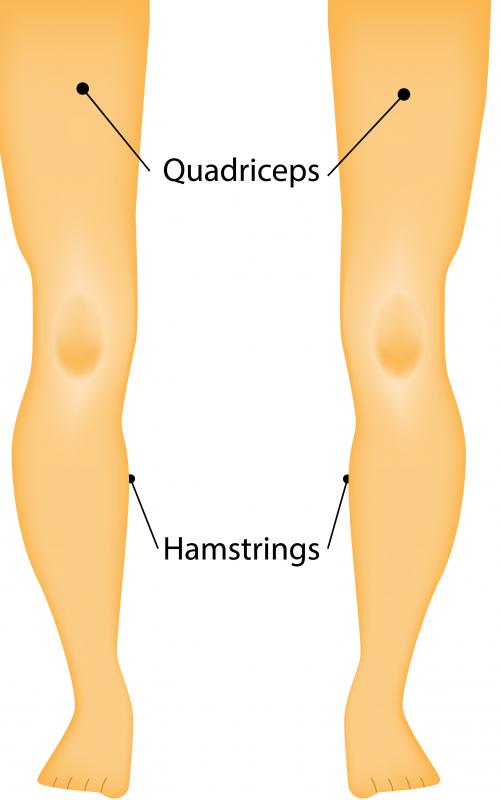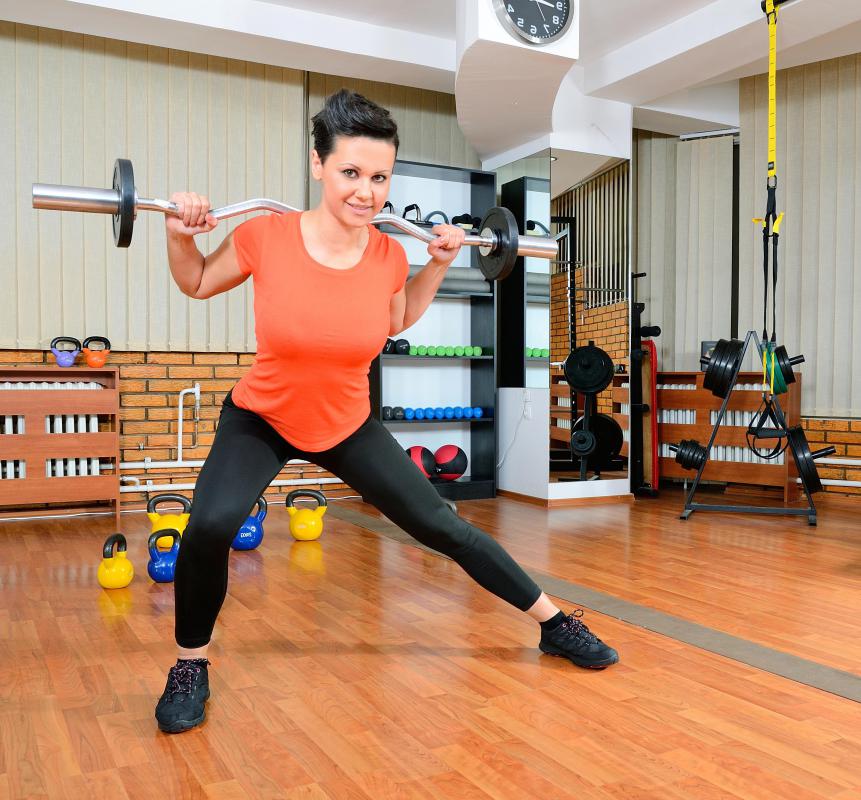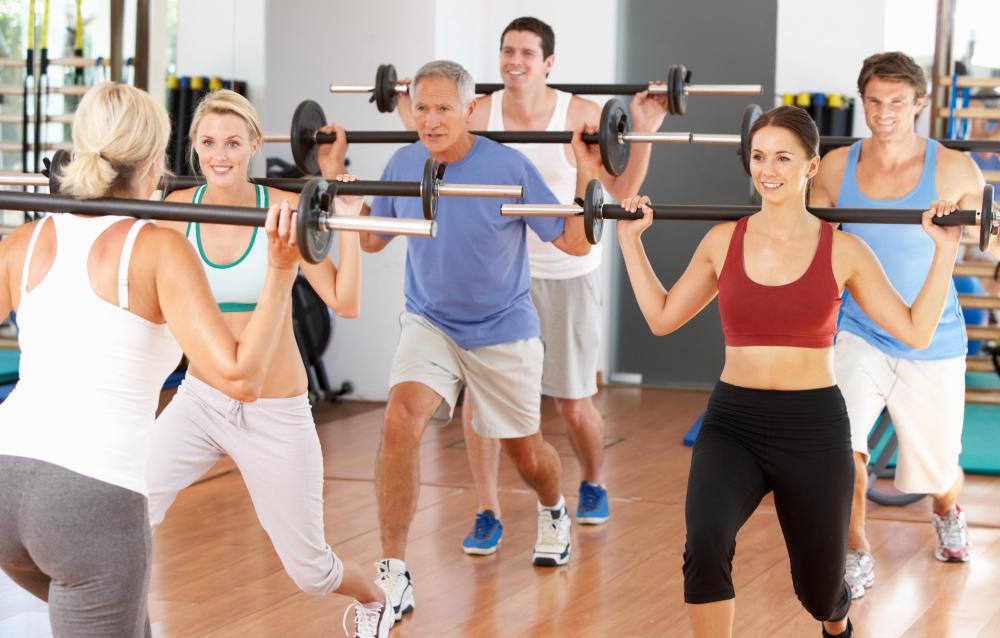At WiseGEEK, we're committed to delivering accurate, trustworthy information. Our expert-authored content is rigorously fact-checked and sourced from credible authorities. Discover how we uphold the highest standards in providing you with reliable knowledge.
What is a Side Lunge?
A side lunge is a lower body exercise that targets the muscles in the butt, hips and legs. It is similar to other lunge exercises in that it involves taking a large step and then lowering the body's weight onto the leg that took the step, but a side lunge requires the athlete to take that step to the side rather than forward or backward. There are a few variations that can increase the intensity of the workout.
To perform a side lunge, an athlete should start in a standing position with the arms hanging loosely to the sides. During the exercise, the athlete should feel free to use the hands however necessary to maintain balance as long as they are not providing momentum that could interfere with the effectiveness of the exercise. The feet should be about shoulder width apart. Throughout the exercise, it is important to keep the abdominal muscles tight so that they can provide adequate support to the body's core. The back should also remain straight, and the head should look forward at all times.

To begin the side lunge exercise, the athlete takes his or her weight off of one leg and steps directly to that side. At this point, both legs are still straight, and the legs and floor should form an equilateral triangle. From this position the athlete bends at the hips and at the knee of the leg that took the step, while maintaining straightness in the other leg. This will lower the body toward the floor and cause the shin of the leg that took the step to become more perpendicular to the floor. The athlete should continue to bend the knee until the shin is completely perpendicular to the floor and the knee is over the foot.

Most of the athlete's weight will be on the bent leg at this point. Both feet should remain flat on the ground, and the back should still be straight. Once the athlete has bent the knee the correct amount, he or she should begin to straighten it again. The athlete should then reverse the order of the steps until he or she has returned to the starting position. The athlete should then perform the same sequence while stepping with the other leg.

One important factor in correctly performing the side lunge is the size of the step. Stepping too far will make it impossible to bring the shin to a completely perpendicular position. Not stepping far enough will result in the shin being perpendicular before the knee has bent very far, thus reducing the benefit of the exercise.
When an athlete performs the side lunge correctly, it provides several benefits. It primarily strengthens the glutes, hips and quadriceps. It also provides some benefits for the hamstrings and abdominal muscles and gives the hip and hamstring muscles a nice stretch. For those athletes who wish to increase the intensity of the side lunge exercise, it is possible to hold either a barbell or a set of dumbbells to increase the resistance.
AS FEATURED ON:
AS FEATURED ON:














Discuss this Article
Post your comments